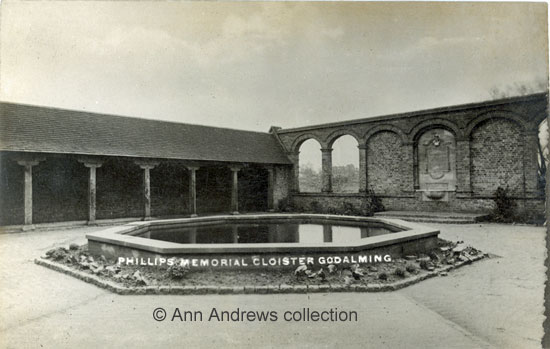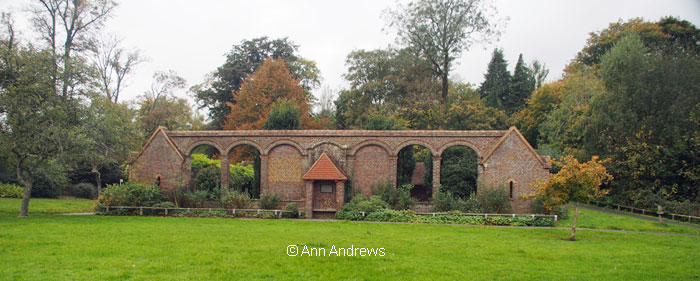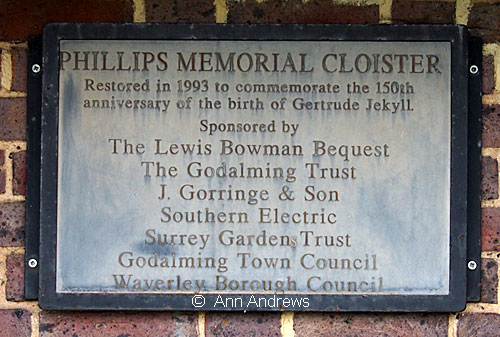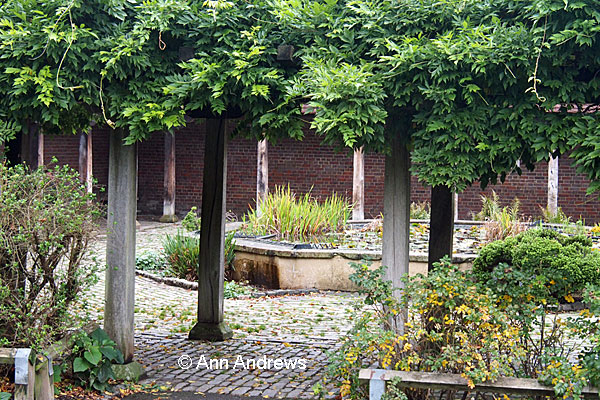This is the story of Godalming's link to one of the worst disasters to befall a passenger ship that was
thought to be unsinkable. The ship was RMS Titanic, "the most luxurious vessel of its time"[1].
The liner had collided with the iceberg off the coast of Nova Scotia, Canada during the evening of 14 April 1912 and sank
in the early morning the following day.
"The wireless operator who flashed out the terrible
signal "S.O.S" and gave the first intimation to the
world of the appalling disaster to the Titanic, belongs to
Farncombe, where he is well known and popular. He is Mr. John
George Phillips and his parents. Mr. and Mrs. O. A. Phillips,
reside in Farncombe street". Jack Phillips was 25
and held one of the highest positions in the wireless service[2].
A second wireless operator who was on board the liner when
she hit an iceberg on her maiden voyage was Mr. Harold Bride.
He later described Phillips as "sticking heroically
to his work to the last". He had fastened a lifebelt
onto Jack whilst he was sending the final distress signals;
a seaman subsequently attempted to take it off him, but Bride
prevented him from doing so[2].
After this incident "Phillips ran aft. That was the
last I saw him. At that time the band was playing a ragtime
tune"[3].
However, the last sighting of Jack was in the water
"after the ship went down, clinging with many others
to an upturned boat, but he is supposed to have perished
from exposure"[4].
Mr and Mrs Phillips, Jack's parents, received telegrams
and letters from all parts of the United Kingdom afterwards.
Mr. Phillips was reported to have said "that
while the death of his son is a great blow, he and his wife
find some consolation in the fact that he died trying to
save others, and in the widespread sympathy which has been
extended to them"[5].

Looking across the River Wey from the Lammas Lands to the eastern side of the Cloister, 1914-20.
The photograph for Miss Jury's postcard could have been taken around the time of the opening ceremony or possibly in the following
few years. Another Jury postcard showing the cloister and church is on Borough Road, Godalming, 1907.
The consensus was that the services Jack Phillips had performed
were sufficiently noteworthy to call for special recognition
and by October 1912 it had been decided to erect a memorial "for
all time for his self-sacrificing bravery". It was
to be a cloister, with a small garden in the middle and seats
sheltered from the wind and rain[6].
A month later Hugh Thackery Turner of Westbrook, an Arts
and Crafts architect, had produced a design for the proposed
memorial. Miss Gertrude Jekyll, the famous garden designer
and author, had designed and was to plant the garden[7].
By February 1913 the sum raised by the Jack Phillips Memorial
Fund was "within a sovereign of £600"[8].
Jack's selfless actions in the face of such a momentous tragedy
had clearly touched the public's conscience.

1914 postcard.
The plants around the central pond were small, so must have been planted shortly before the opening ceremony.
In the spring of that year the Phillips' Memorial Committee had not found a suitable site but two new sites were then put
forward for consideration, one between the river and the church and the other on Chalk Road opposite the Common Meadows.
Although there were objections raised about such things as the proximity to the railway and the noise of passing trains, it
was the first suggestion that won the day[9]. This was to build it on part of the site of
Godalming's old animal pound[10].
Not long before the official unveiling, the memorial was discussed
by the Men's Club Debating Society, which had recently been
resuscitated [sic] in Godalming. Mr. Thackery Turner
told the assembled group that "although it was to
be a memorial to Jack Phillips it was the intention of the
committee that the wall space all round the interior of the
cloister should form a suitable place for memorial tablets
recording noble deeds of other inhabitants of Godalming"[11].
The opening ceremony of the Phillips Memorial took place
on Wednesday April 15th 1914, on the second anniversary
of the Titanic's sinking. It had cost about £700 altogether,
raised by public subscription. Mr. Phillips' family - his
parents and his two sisters - as well as Harold Bride and
his parents were amongst those present at the ceremony.
The High Sheriff of Surrey opened the Memorial and paid tribute
to the many brave men and women on the Titanic, some of whom
were present. Tributes were also made to Mr. Thackery Turner
and Miss Jekyll[12].
Mr. Alphonso Marconi and Captain Sankey, directors of the Marconi Wireless
Telegraph Company, Mr. G. E. Turnbull (assistant manager)
and Mr. H. W. Allen (secretary) all attended. Mrs. G. F.
Watts, Mrs. More Molyneux and Miss Thackery Turner (who was
shortly to marry George Leigh-Mallory of Everest fame) were
amongst the local people there, alongside members of the
Memorial Committee, various Aldermen, and many from Godalming
Corporation. Messrs. Comber and L. Pook represented the Postal
Telegraph Clerks' Association, who had provided the drinking
fountain and had also contributed to the memorial. Members
of the clergy were also present[12].

The Eastern side of the cloister looking towards the river, about 1955.
Godalming Borough Council decided to fell nine weeping willows along the riverbank near
the memorial in 1956 and replant the same species on the opposite bank[13].

The east side of the cloister in 2024. The River Wey is on the right.
The Phillips' Memorial was the third memorial to Jack Phillips in the borough. A brass tablet had been placed in Farncombe Church,
where he had been a chorister, and an oil painting had also been presented by past and present pupils of Godalming Grammar School
where he had been a pupil after leaving Farncombe School. It was hung in the Municipal Buildings[12].

Plaque under the canopy where the seat is (see above photo), recording all those who contributed to the 1993 restoration,
which also marked the 150th anniversary of the birth of Gertude Jeykll.
The Cloister's Interior.
It had been initially proposed to build a fountain, designed by Gertrude Jeykll, in the centre of the town on Portsmouth Road but
in the end the fountain was placed within the cloister.

Drinking fountain provided by the Postal Telegraph Clerks' Association.
Waverley Borough Council were granted Lottery funding in 2011 for further extensive restoration work, including the
repair of the fountain's bowl which had been quite badly damaged.

The lily pond and cloister after extensive restoration work was undertaken, also made possible by to the National Lottery grant.
The Cloister occupies an area of about 80 sq ft. In the centre is a large octagonal pond for water lilies, with the water
level about a foot above the surrounding paving. It was paved with granite setts laid out in a spider's web pattern radiating
outwards from the pond. A flight of steps from the Borough Road side leads down into the cloisters and the view from here is
of the memorial tablet and the church. The ground to the north, down to the river, had not been levelled before
the official opening[12].
The original plants were all chosen by Gertrude Jeykll. "The ground around the memorial,
together with the border around the lily pond, and that under the eastern wall, have been laid out under the personal
supervision of Miss Jekyll". At each side of the steps leading to the cloister Portugal laurels
and bamboo were planted and from the main entrance to the roadway berberis. Shrubs and flowering plants were placed
under the southern wall. Around the lily pond were ferns and other foliage plants and large tubs of Agapanthus were
in two corners. Evergreens and flowering plants were planted in the border under the arcade wall[14].
In May 1914 the Town Council's General Purposes Committee reported that they had taken over the control and supervision
of the Phillips Memorial. A sum of £30 had been included in the current half-year's estimate for the making of paths
on the site, the erection of fences, and the provision of seats, but it was thought that it might not be necessary
to incur all this expenditure during that financial year.
Annie Jury's photograph (image 3 above) shows the memorial originally had a south wall. About 1965 this was removed
and replaced by a pergola; the "modification", described as discreet, was made to prevent vandalism[10].

View of the pond through the pergola on an autumn day, 2024.
People travelling from a considerable distance continue to visit the site today.
Something good also emerged from the Titanic disaster. The Canadian coroner in Halifax, where
many bodies were taken, recognised the scale of the problem
he faced and he called in colleagues from the surrounding
area to help with the task. To aid the effort he introduced
pioneering, systematic gathering of personal effects and
physical features, etc., effectively creating modern forensic
techniques from scratch. Miraculously, the most recent identification
of a victim from this disaster occurred in 2011.
 Phillips family
grave and memorial to Jack at the Nightingale Cemetery. Phillips family
grave and memorial to Jack at the Nightingale Cemetery.
 There are two more photographs of this memorial Godalming,
Surrey : A selection of interesting facts about the town, including a view from beside the war memorial. There are two more photographs of this memorial Godalming,
Surrey : A selection of interesting facts about the town, including a view from beside the war memorial.
 The Maritime Museum of the Atlantic in Halifax, Nova Scotia, has
The
Unsinkable Ship and Halifax. The Maritime Museum of the Atlantic in Halifax, Nova Scotia, has
The
Unsinkable Ship and Halifax.
Also see
 Titanic Facts, The lIfe and Loss
of the Titanic Victims in Numbers. Titanic Facts, The lIfe and Loss
of the Titanic Victims in Numbers.
 Titanic Victims -
How many people on the Titanic died?. Titanic Victims -
How many people on the Titanic died?. |